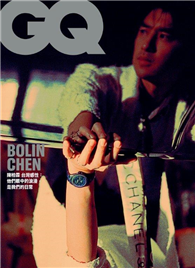The story of Raleigh’s African American communities begins before the Civil War. Towns like Oberlin Village were built by free people of color in the antebellum era. During Reconstruction, the creation of thirteen freedmen’s villages defined the racial boundaries of Raleigh. These neighborhoods demonstrate the determination and resilience of formerly enslaved North Carolinians. After World War II, new suburbs sprang up, telling tales of the growth and struggles of the Black community under Jim Crow. Many of these communities endure today. Dozens of never before published pictures and maps illustrate this hidden history. Local historian Carmen Wimberly Cauthen tells the story of a people who--despite slavery--wanted to learn, grow, and be treated as any others.
| FindBook |
有 1 項符合
Historic Black Neighborhoods of Raleigh的圖書 |
 |
Historic Black Neighborhoods of Raleigh 作者:Cauthen 出版社:History Press 出版日期:2023-01-09 語言:英文 規格:平裝 / 136頁 / 普通級/ 初版 |
| 圖書館借閱 |
| 國家圖書館 | 全國圖書書目資訊網 | 國立公共資訊圖書館 | 電子書服務平台 | MetaCat 跨館整合查詢 |
| 臺北市立圖書館 | 新北市立圖書館 | 基隆市公共圖書館 | 桃園市立圖書館 | 新竹縣公共圖書館 |
| 苗栗縣立圖書館 | 臺中市立圖書館 | 彰化縣公共圖書館 | 南投縣文化局 | 雲林縣公共圖書館 |
| 嘉義縣圖書館 | 臺南市立圖書館 | 高雄市立圖書館 | 屏東縣公共圖書館 | 宜蘭縣公共圖書館 |
| 花蓮縣文化局 | 臺東縣文化處 |
|
|
圖書介紹 - 資料來源:博客來 評分:
圖書名稱:Historic Black Neighborhoods of Raleigh
Migration, Aging and Japan’s Sustainable Society
A Question of Answers: Volume I
A Question of Answers: Volume II
Social Class, Language and Communication
Talk Reform: Explorations in Language for Infant School Children
Human Service Organizations in Times of the Covid-19
Policing Drugs: Legitimacy, Practice, and the Self-Legitimacy of Drug Detectives
The Legendary Detective: The Private Eye in Fact and Fiction
Working with Violent Men: From Resistance to Change Talk in Probation Domestic Abuse Programmes
A Place Called Home: A Memoir
A Question of Answers: Volume I
A Question of Answers: Volume II
Social Class, Language and Communication
Talk Reform: Explorations in Language for Infant School Children
Human Service Organizations in Times of the Covid-19
Policing Drugs: Legitimacy, Practice, and the Self-Legitimacy of Drug Detectives
The Legendary Detective: The Private Eye in Fact and Fiction
Working with Violent Men: From Resistance to Change Talk in Probation Domestic Abuse Programmes
A Place Called Home: A Memoir
|










